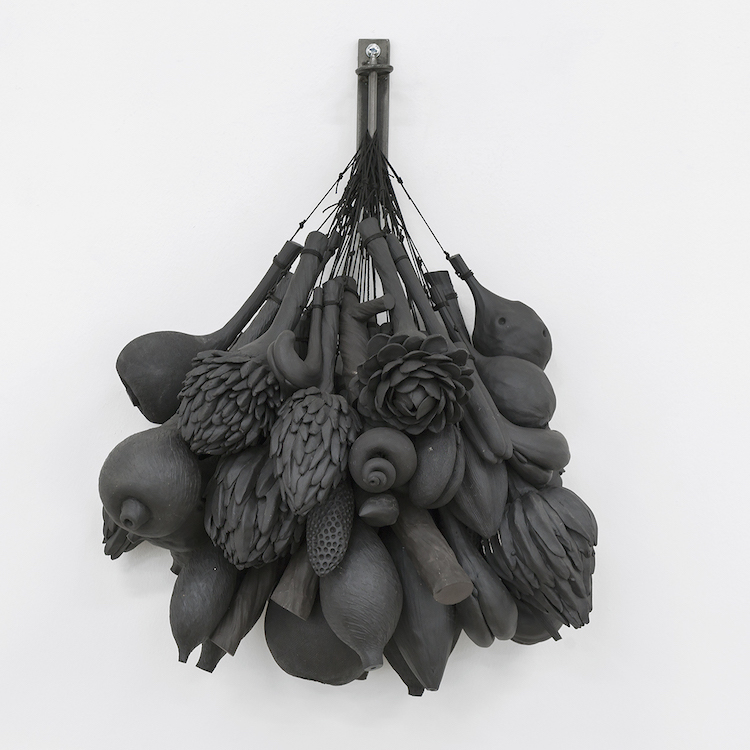MIAMI — American artist David Hicks‘ most recent solo exhibition Clippings and Hard Fruit at Mindy Soloman (May 20 – August 5, 2017) explores how we experience nature and our environment has evolved. The exhibition with its prophetic ceramic wall hangings and vessels reveals an unsettling liminality between modern humanity and the natural world.
Featured image: David Hicks, Dark Fruit, 2017, Ceramic,rope, and metal, 19 x 15 x 9 inches.

David Hicks, Dark Fruit (detail), 2017, Ceramic, rope and metal, 19 x 15 x 9 inches.

David Hicks, (left) Blue Clippings, 2017, Ceramic, rope and metal, 30 x 19 x 11; (right) Char Vine, 2017, Ceramic, rope and metal, 56 x 20 x 17 inches. Click for larger image
Hicks explains his concept for the show further:
“I am drawn to the forms and processes that inform my surrounding landscape. Regrettably, I find myself looking at nature from a distance, separated through an abnormal mechanism that keeps me physically disconnected but visually immersed. Confined in my vehicle I commute through the California agricultural heartland, experiencing the landscape locked behind auto glass. My predicament is a byproduct of a life filled with constant movement and the artificial landscape of steel and concrete I work within. “
Drawing inspiration from nature and agricultural products, his works examine the formal qualities of plants and organic forms common to the American landscape like tree stumps and seed pods.
“This current body of work reflects a growing response to my personal detachment from the natural world. Obsessing upon the missing elements I’m segregated from, I engage natural forms to fill a personal void. The fruits of my fixation are the presented clippings and forms that make up Clippings and Hard Fruit. Manifested from the truth of my surroundings, generated by my need for the organic, Clippings and Hard Fruit is a response to my environmental quagmire.”
Read more about David Hicks and his artworks.
About the artist: Hicks is an artist living and working in California. Hicks holds a BFA from the California State University in Long Beach, and in 2006 he completed his MFA at Alfred University in New York. Hicks exhibits his work throughout the United States and abroad, and is included in many permanent collections the World Ceramic Exhibition in South Korea, the United States Embassy Art Collection and the American Museum of Ceramic Art.

David Hicks, (left) Container (Pink Blooms), 2017, Ceramic, 12 x 17 x 17 inches; (right) Container (flower and branch), 2017, Ceramic, 15 x 21 x 17 inches. Click for larger image

David Hicks, Gold Cluster, 2016, Ceramic, rope and metal, 21 x 14 x 8 inches. Click for larger image
Do you love or loathe this work of ceramic art from the worlds of contemporary ceramics and contemporary ceramic art? Let us know in the comments.










Add your valued opinion to this post.